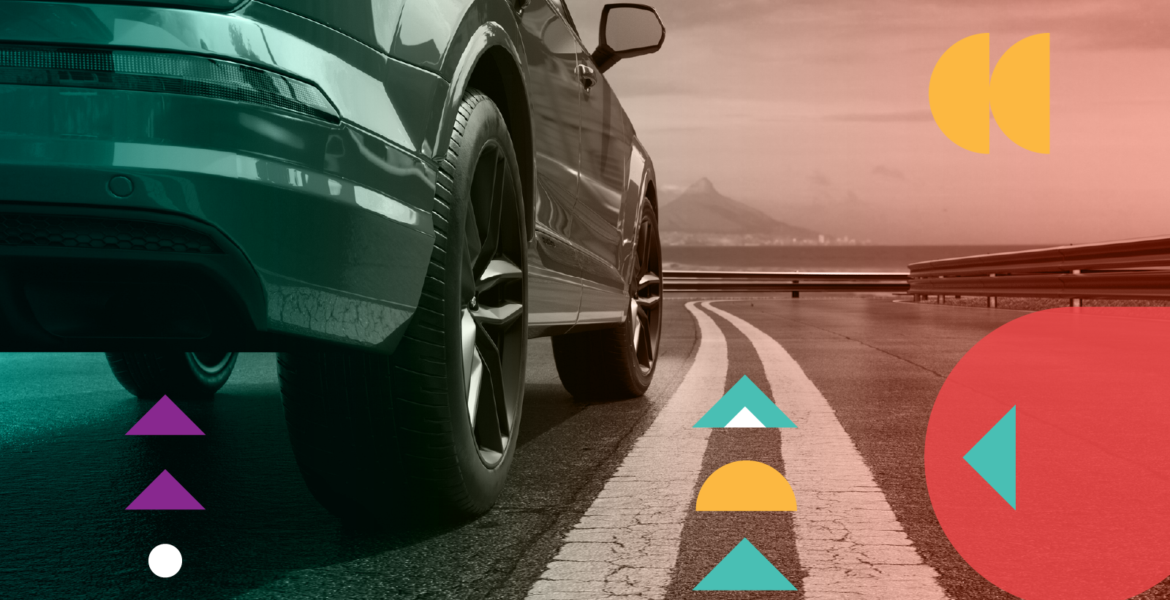By Stefanie Gilmore, Head of Strategy NA, Design Bridge and Partners
The annals of automotive history are filled with brands joining forces to jumpstart a new chapter. Daimler Benz’s short-lived acquisition of Chrysler in 1998 and the emergence of Stellantis in 2021 following the FCA-French PSA Group merger serve as two standout examples.
The industry was abuzz with reports of a potential Honda-Nissan merger, a deal that would have created one of the world’s largest automakers. But now officially, talks collapsed: Nissan rejected Honda’s proposal to make it a subsidiary, citing concerns about autonomy and valuation. The companies ultimately concluded that merging wouldn’t offer the agility needed to stay competitive in an industry undergoing seismic shifts.
While headlines will focus on corporate maneuvering, the real challenge persists: how do these automakers—now firmly on separate paths—define a brand strategy that secures relevance in an evolving industry?
Because as cars become increasingly similar functionally, the brands that will win are those that create a powerful emotional connection with consumers. Whether through reinvention, repositioning, or forging new alliances (perhaps even outside the traditional automotive sphere), Nissan and Honda must clarify what they stand for to stay competitive.
A (Literal) Series of Wrong Turns
Each brand has a rich heritage, with motorsport success at its heart. Honda’s relationship with Formula One began more than 50 years ago, peaking with Ayrton Senna’s Driver’s Championship win in 1988. Nissan’s racing arm, Nismo, has competed in iconic events such as the 24 Hours of Daytona and Le Mans. Mitsubishi achieved rallying immortality with 12 Dakar Rally victories and four consecutive World Rally Championships between 1996-99.
Yet, if we’re being honest, their time in the relative sun is in the past—mirroring broader struggles in keeping pace with the rapid ascent of EVs and shifting consumer expectations. With tech-powered driving experiences becoming the norm, today’s car buyers prioritize technology, efficiency, and comfort, rendering the reliability of the combustion engine a priority from the past.
And with falling behind comes financial struggles. Nissan’s profits in the six months ending September 2024 were down down 94% year-on-year, and Honda experienced a 15% decline in profits in Q2 2024. Meanwhile, Chinese car manufacturers are thriving. Chinese-origin brands sold more than 13 million new cars in 2023—a 23% increase from the prior year, marking the first time they outpaced American brands.
BYD Auto exemplifies the threat facing Honda, Nissan, and the wider automotive sector. Originally a battery manufacturer, it has evolved into one of the world’s leading EV producers over the past 22 years. In 2024, BYD’s sales hit 1.76 million, second only to Tesla. The brand’s vertically integrated supply chain, including plans to mine its own lithium, has proven pivotal in driving cost efficiency, seamless operations, and rapid brand-led innovation.
In contrast, Honda and Nissan still lack a clear focus that helps them stand out. Their USPs feel increasingly generic, with little to differentiate them from competitors. While they still offer solid value for money, this quality alone won’t fuel success in a market of homogenizing hardware.
So what do they need to do?
Find a Lane and Stay in It
For any business facing an inflection point—whether through a merger, a rebrand, or a strategic repositioning—reassessing brand portfolios creates an opportunity to burn bright again. Now that Honda and Nissan are definitively notmerging, this moment demands a sharper articulation of what makes each brand distinct.
Defining what each brand stands for—by identifying how they can credibly satisfy a consumer need in a way no other brand can—is a good place to start. For well-known brands, this meaning should be anchored in their storied legacy, but also carve out an ownable space in the evolving marketplace. From a portfolio perspective, ensuring clear differentiation will maximize brand strength and minimize internal competition. And distinct meaning will also ensure that any operational challenges—whether from potential mergers, cost-cutting efforts, or shifts in strategy—won’t erode key points of differentiation at a product level.
In Nissan’s case, it could leverage its technological roots, having released the world’s first mass-market EV in 2010 with the Leaf. Conversely, Honda’s expertise in compact designs could position it as the go-to for economic sedans, while Mitsubishi could reinforce its reputation as an off-roading specialist.
Another imperative in such a fast-moving industry is aligning on a future-focused positioning that will endure, because it takes time to cement new meaning in people’s minds. Take Jaguar, which sent the branding community into freefall with with its recent brand transformation. Execution aside, this shift was the culmination of a long-term strategy built to evolve from an elitist British brand to a more inclusive company that embraces technology. A transformation that stemmed from gaining a new understanding of what affluent car buyers actually want and where the automotive industry is headed.
Getting Comms in Gear
With Honda and Nissan currently lacking the resonance they were once accustomed to, reengaging consumers and clearly communicating what they stand for is key. On the one hand, reaching interested consumers has never been easier thanks to personalized ads powered by droves of data—a new paradigm that will serve these brands well. But on the other hand, hyper-targeted communications make establishing new brand meaning more challenging, because brands are served up in service of the individual consumer over brand itself.
Creating brand assets that can withstand the media meatgrinder and build the intended shared meaning in consumers’ minds is paramount. While logos and typography are important, they’re not the only assets of note. Tone of voice, sonic branding, UX, UI—each one is a powerful ingredient that contributes to building a distinctive, cohesive brand that fosters loyalty.
The Engine Matters
For Honda and Nissan, the road ahead remains uncertain. But one thing is clear: their futures must be defined by more than financial maneuvering and cost-cutting. Nissan’s rejection of Honda’s proposal wasn’t just about corporate control—it was a reflection of deeper concerns about how the brand should be positioned for long-term success.
To compete in the EV race and maintain global relevance, each company will need employees to believe in the direction and potential of their business. Culture and clarity are essential to uniting and galvanizing a workforce, but for companies of this size, they won’t just materialize. They need to be established through a clear brand purpose—one that includes an aspirational vision, a proposition people can get behind, and values that are actively lived.
Which raises some questions… what should be carried forward from each brand’s legacy? What needs to be created anew? And what will it take to engage, recruit, and retain the best talent in the industry? Because generating and sustaining passion and pride is what these brands will need to fend off the likes of Stellantis, BYD, and Tesla in the years ahead.
Going back to the mechanics of this moment—the importance of building new strategies in light of past highs can’t be stressed enough. However, this doesn’t mean playing it safe. Being bold and finding new relevance is a must for Honda and Nissan if they’re to avoid fading into obscurity.







